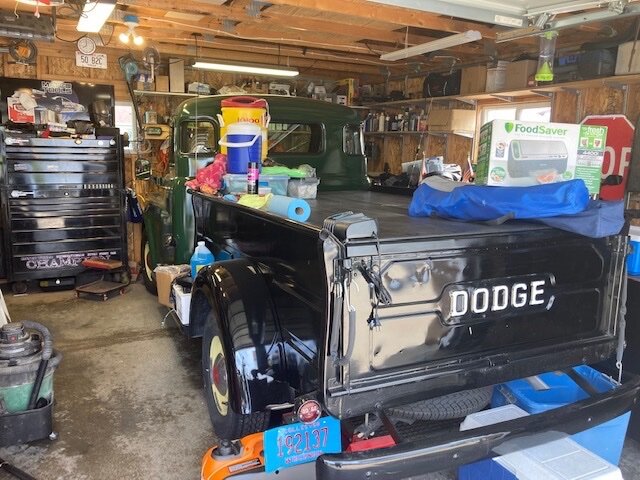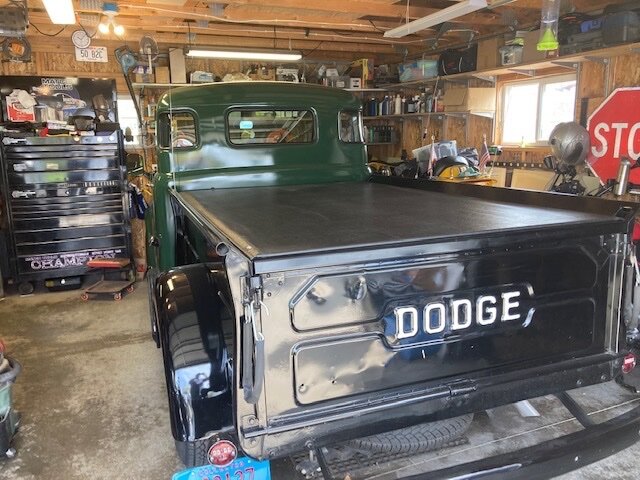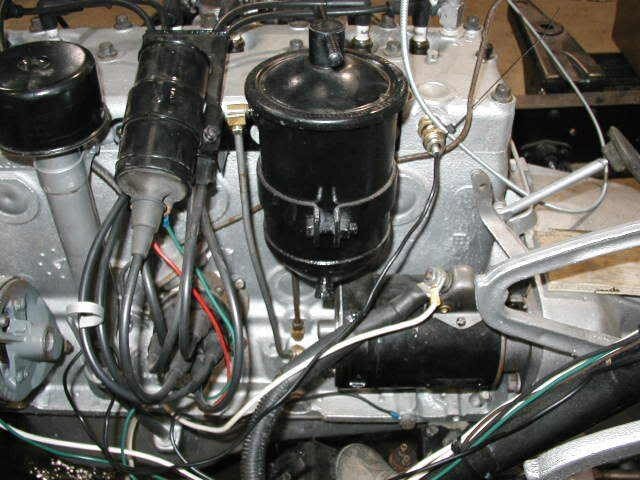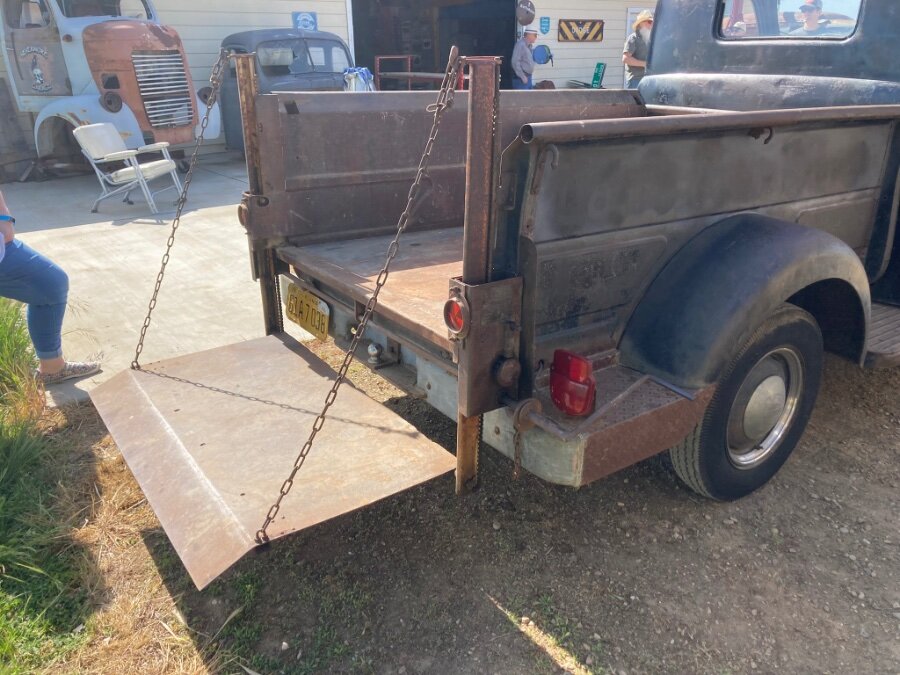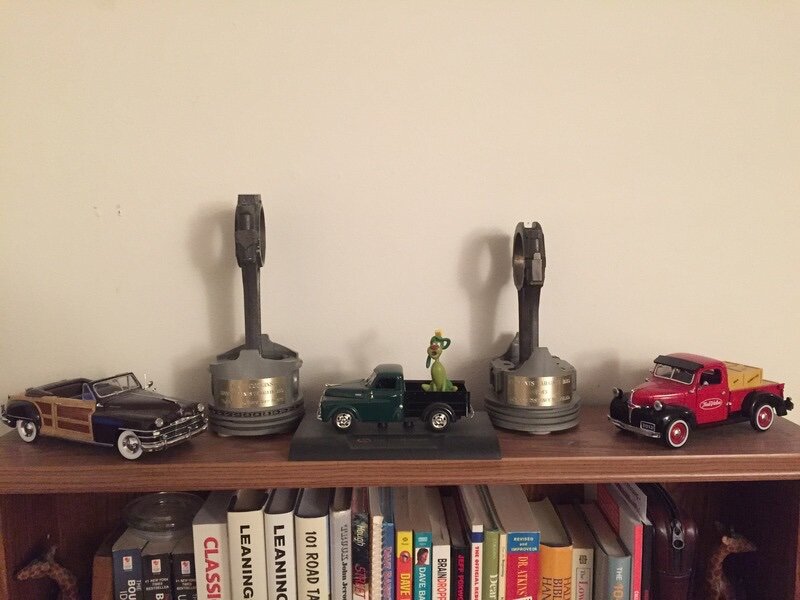-
Posts
9,390 -
Joined
-
Last visited
-
Days Won
87
Content Type
Links Directory
Profiles
Articles
Forums
Downloads
Store
Gallery
Blogs
Events
Everything posted by Merle Coggins
-
Didn’t have much on the agenda with my truck for today. I was planning a bit of a garage cleaning and organizing so that we could get back to work on my wife’s Metropolitan. But since it is IWOYTD I figured I’d start by cleaning off the truck. It tends to suffer from flat surface syndrome. Then I decided to fire it up just to hear it run. That’s when I noticed that it did need a little maintenance. The battery was dead in my clock. I swapped out the AA battery and set the clock. As I was setting the clock I looked at my shop clock for reference and realized that one needed a battery too. ? Before and after photos included to satisfy the rules of IWOYTD. I should have taken the before pic last week before I made a cardboard run to the city recycle center. It was piled up with boxes. Only 1 has collected since then.
-

10th Annual International Work On Your Truck Day!!!
Merle Coggins replied to 48Dodger's topic in Mopar Flathead Truck Forum
Yes, I saw that shortly after my last post. -

10th Annual International Work On Your Truck Day!!!
Merle Coggins replied to 48Dodger's topic in Mopar Flathead Truck Forum
Maybe you could create a new thread and copy / quote her post to the new thread? -
-
The little tab at the end of the spring must hook into the points arm during installation. If not it will not offer any spring tension to help close the points. I made that mistake once and it took a while to figure out why the engine wouldn't run above about 1500 RPM. I eventually discovered my mistake and got it installed correctly. The copper strap offered just enough spring tension to close the points at idle, but at higher RPM they wouldn't close fast enough and would start to bounce, causing a serious lack of power as the timing was very erratic.
-
You are correct. With a Positive Ground system the Positive (Red) lead of the meter would go to the ground side and the Negative (Black) lead would connect to the points wire from the coil. You're not really "reversing" the leads as Red is still going to Positive and Black to Negative. Some people refer to this as "reversing" the leads as they are used to putting the Red on the coil-points wire and Black to ground, which is correct on a Negative Ground system. Either way you connect Red to the Positive side and Black to the Negative side, so you are not "reversing" the leads.
-

how to remove plymouth flat 6 flywheel
Merle Coggins replied to chris 48 P15's topic in Technical Archives
If you have all of the bolts removed it should just be sitting on the crank flange. It may have a bit of a rust bond holding it on. Try giving it a little love tap with a rubber mallet. -
Go to Then and Now Automotive for a kit for your fuel pump. https://www.then-now-auto.com/product-category/fuel-pump-kits/
-
If you have a machine shop on base they should be able to fix the rod eye too.
-

What goes on the left side of the block?
Merle Coggins replied to MarcDeSoto's topic in P15-D24 Forum
That lug may not be used in your application. -
For Hot restarts I find that holding the throttle open (about 1/4 - 1/2 throttle) will allow a quicker start. The fuel percolation issue pushes fuel into the intake manifold and the engine is flooded. Holding the throttle open gives it more air to counter the flooded condition and allow the engine to start.
-
It's basically a short piece of heater hose.
-
Which way to plumb the filter canister depends on the manufacturer. Some input from the upper area and return out the bottom. Others feed in the bottom and return out near the top. See if you can find markings near the ports to identify which is IN and OUT. If you strike out there you may need to study the design to figure out how to plumb it and which filter element to use. Regardless of all of that, here are a couple of pictures of my engine to show the connections at the block and filter canister. Mine is a Deluxe Filter and it feeds IN at the bottom connection and returns from the upper one.
-
Thank you Tim and Stephanie for great day. I always love my trips out to the BBQ. It never disappoints. Always something new to discover…
- 99 replies
-
- 5
-

-

-
- bbq april 2nd 2022
- bbq april
-
(and 5 more)
Tagged with:
-

39 Plymouth business coupe electrical
Merle Coggins replied to Joshuanotsosmart17's topic in Technical Archives
That is your Voltage Regulator for your Generator. “BAT” is the battery connection, coming from your Ammeter. “FLD” goes to the Field connection (small terminal) on your Generator. And “ARM” goes to the Armature connection (large terminal) on your Generator. The lower contacts, where you see a spark, is the Circuit Breaker contacts which connect the battery to the Generator when the output is high enough, and cut the connection when the engine is off. The other two contacts are for voltage regulation and current regulation. These don’t carry as much current so you may not see a spark across them when they open. -
I didn’t recognize that as a trophy. It looks more like a plaque. ?
- 99 replies
-
- 2
-

-

-
- bbq april 2nd 2022
- bbq april
-
(and 5 more)
Tagged with:
-
Umm… I only count 3. Is that how engineers count in Minnesota?
- 99 replies
-
- 1
-

-
- bbq april 2nd 2022
- bbq april
-
(and 5 more)
Tagged with:
-
- 99 replies
-
- 1
-

-
- bbq april 2nd 2022
- bbq april
-
(and 5 more)
Tagged with:
-
The bearings should all be packed with grease. Then the inner bearing goes into it’s mating bearing cup in the drum and the seal gets pressed into the the drum. Once the drum is in place the bearing will slide onto the spindle and press against the step where the seal rides. The bearing shouldn’t touch the seal once it is all installed.
-
If you had valves sticking open you’d have numbers much lower than that. They’d be closer to 0 on the cylinders with valves hanging open. That should be enough compression to get it started. It may just be stuck rings and a good heat cycle may help loosen things up.
-
Like may others I didn’t even realize there was supposed to be something there. I think I filled the gaps between the lower panel and the cab sill with caulk, especially on the front corners as I found that water would come up through there when driving in the rain. It appears that these pieces are supposed to serve that purpose.
-
This comment makes me question your timing again. Have you done any static timing? Do you have a timing light? Static timing can be done simply with a volt meter or test light. Crank the engine by hand to get the #1 cylinder at Top Dead Center (TDC) on the compression stroke. Removing the spark plugs makes it easier. Also, you can put a finger over the plug hole to detect when it is making compression to verify which stroke you are on. Once you have the engine at #1 TDCC connect a test light to the terminal on the side of the distributor. Loosen the distributor hold down clamp and rotate the distributor to fully retarded (counter clockwise I believe) Then rotate the other direction until your test light lights up, or your volt meter shows voltage. This is the position where the points open and the coil would send spark to the plugs. Tighten things down and try starting again. If you have a timing light you can also check the timing while cranking to be sure you are still around TDC. Eventually you’ll want to adjust it a few degrees advanced, but this should get it to start. Another thing to check regarding the condition of your distributor. If you remove the cap you should be able to twist the rotor one direction against a spring, and if you let go it should return to where it was. If there is no spring resistance, and you can rotate it back and forth easily, this indicates that the advance springs are bad and the timing will advance quickly as soon as it starts rotating. This will make setting your timing very difficult.
-
The glass bowl on the pump is a sediment bowl. There should be a screen at the top. It is designed to collect any big pieces of debris to keep them out of the pump. My truck, like many others, have a filter at the inlet to the carburetor.
-
Regarding your comment about partially seizing, or cranking slow. This makes me think that either the timing is too far advanced, your battery cables are too small or badly corroded, or your starter has an issue. *Too much advance will try to fire before the piston gets to the top, trying to push the piston back down while the starter motor is trying to push it up. *Too small, or corroded, battery cables cause a serious voltage drop at the starter and beyond. This not only slows own the cranking but also reduces the voltage available to the ignition system reducing the spark quality. *If the starter is dragging, or has other issues, it will also cause a serious voltage drop (see above)


